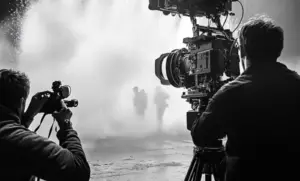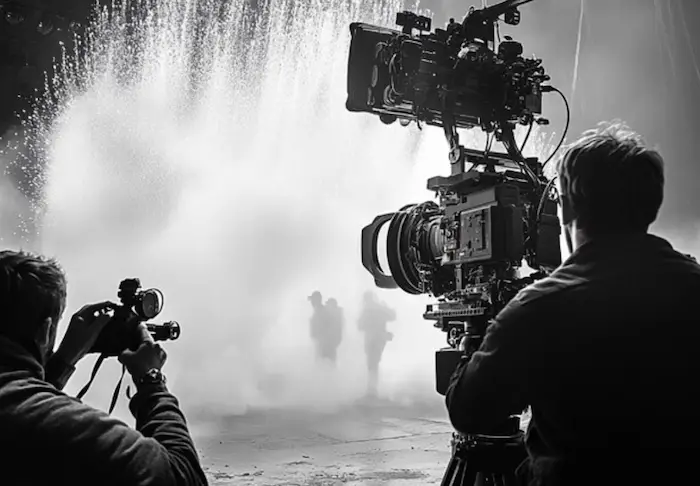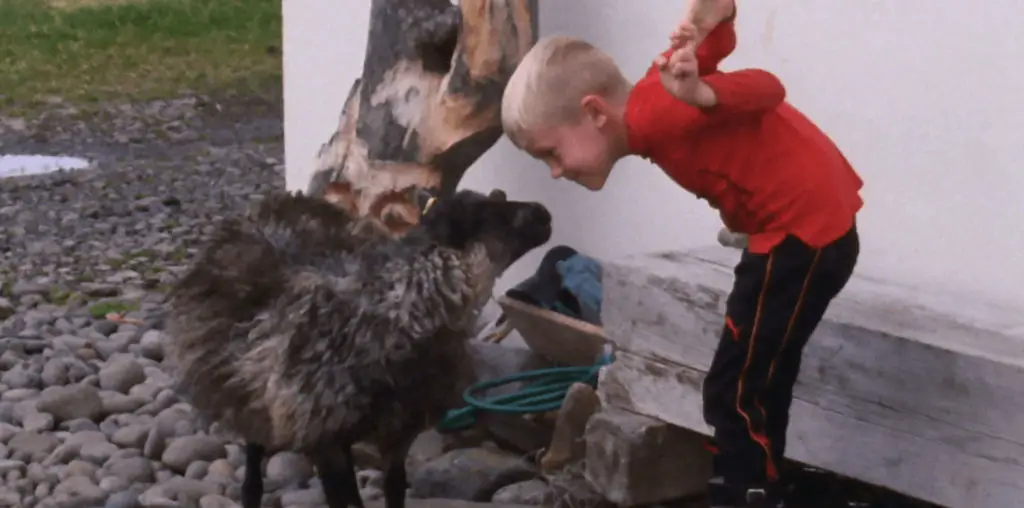
Have you ever watched a movie and felt completely absorbed in its world? Maybe a scene made you tear up, laugh uncontrollably, or sit at the edge of your seat in excitement.
But have you ever wondered how filmmakers create these emotional experiences?
Movies are carefully crafted to guide viewers through a journey of emotions. Every shot, sound, and edit is chosen with a purpose. Filmmakers use a combination of visual techniques, music, storytelling, and editing to create emotional responses.
Let’s explore how filmmakers use different techniques to connect with audiences on a deeper level.
How Camera Work Shapes Emotions
The way a scene is shot plays a huge role in how it makes us feel. Every camera angle and movement influences our perception of a character or situation.
Close-up shots bring us closer to the character’s emotions. A tear rolling down someone’s cheek or a subtle change in their expression can make a moment feel personal and powerful. When a character is excited or happy, a close-up makes us share that moment with them.
Wide shots, on the other hand, give us a sense of space and perspective. They are often used in scenes that showcase breathtaking landscapes or moments of reflection. A wide shot of a character standing in a vast open field can create a feeling of freedom and adventure.
Low-angle shots make characters appear strong and confident. This technique is often used in heroic moments to make a character look inspiring. High-angle toto shots do the opposite, giving a feeling of perspective and making us see a character in a certain way.
Camera movement also plays a role in emotion. A smooth, steady shot creates a calming effect, while a handheld camera can add excitement and energy. Slow motion can make a moment feel more significant, allowing us to absorb every detail and emotion in a scene.
The Role of Lighting and Colors
Lighting and color design influence emotions in ways we might not always notice. Filmmakers use different lighting techniques to set the mood of a scene. Soft lighting creates a warm, welcoming atmosphere, while natural daylight gives a sense of realism. Scenes filled with golden light often feel comforting and nostalgic.
Colors are equally important. Bright and vibrant colors bring energy and excitement, while cooler shades create a sense of calm. Filmmakers often use color themes throughout a movie to subtly guide emotions. A movie with a lot of warm, golden hues might evoke a feeling of happiness, while a film with deep blues and purples may feel more thoughtful and introspective.

How Music and Sound Create Emotional Impact
Music has an incredible ability to stir emotions. The right soundtrack can enhance a scene’s meaning and make it unforgettable.
When a movie wants to build excitement, it often uses fast-paced, energetic music. An uplifting melody during a triumphant moment makes us feel inspired. Slow, soft music in a heartfelt scene deepens emotional connection.
Even silence is an important tool. When everything goes quiet at a key moment, it draws the audience’s attention and makes the scene feel more powerful. A sudden pause in music can create anticipation, making the next moment even more meaningful.
Sound effects also contribute to emotional impact. The gentle rustling of leaves, the distant sound of waves, or the hum of a bustling city all add layers to a scene. These small details make movie worlds feel real and immersive, helping audiences connect with the story on a deeper level.
The Power of Editing in Storytelling
Editing is where a movie truly comes to life. The way scenes are arranged and paced affects how we experience emotions.
One of the most effective editing techniques is the montage. This is when multiple scenes are shown in a sequence to convey time passing or a character’s transformation. A training montage, for example, shows a character working hard toward their goal, and by the end, we feel a sense of accomplishment along with them.
The rhythm of editing also influences how we feel. Quick cuts create excitement and energy, making action scenes more engaging. Slower edits allow us to take in the details, making toto togel emotional moments more meaningful.
How Storytelling Creates Emotional Connections
A great story is the foundation of any emotionally impactful movie. The structure of a film is designed to take audiences on an emotional journey.
The hero’s journey is one of the most common storytelling techniques. It follows a character as they face challenges, grow through experiences, and ultimately achieve something meaningful. This structure keeps audiences engaged because it mirrors real-life struggles and triumphs.
Character development plays a huge role in emotional storytelling. When we understand a character’s motivations and challenges, we naturally connect with them. A well-written character makes us feel invested in their journey. Whether they are achieving a dream, overcoming obstacles, or forming meaningful relationships, we feel their emotions as if they were our own.
Dialogue is another storytelling tool that shapes emotions. The right words at the right moment can be unforgettable. A powerful conversation between two characters can create a lasting impact. Sometimes, the simplest lines carry the deepest meaning when delivered with the right emotion.
The Psychological Influence of Movies
Filmmakers also use psychological techniques to strengthen emotional engagement. One of these is foreshadowing, where small details early in the movie hint at what’s to come. This builds anticipation and makes moments feel even more satisfying when they unfold.
Another technique is emotional contrast. A joyful moment following a dramatic scene can make the happiness feel even stronger. A moment of reflection after an exciting sequence gives audiences a chance to absorb the emotions before moving forward. This balance keeps the audience emotionally connected throughout the film.
Why We Love Emotionally Engaging Movies
Movies have a special way of making us feel connected to stories and characters. The combination of cinematography, music, editing, and storytelling creates a powerful experience that stays with us. Every detail in a film is carefully designed to guide emotions, and that’s what makes cinema so special.
Next time you watch a movie, take a moment to notice how each scene makes you feel. Whether it’s the lighting, the music, or the way a character speaks, there’s always a reason behind the emotions you experience. Filmmakers use these techniques to create unforgettable stories that inspire and entertain.

